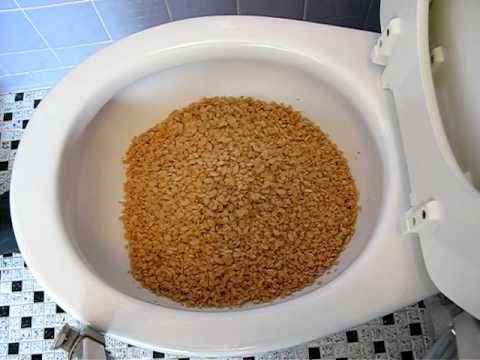Are You Allowed to Dispose of Food in the Toilet?
Are You Allowed to Dispose of Food in the Toilet?
Blog Article
The author is making several good pointers related to Flushing Food Down the Toilet? in general in this article which follows.

Intro
Many people are often confronted with the issue of what to do with food waste, especially when it comes to leftovers or scraps. One typical question that occurs is whether it's all right to purge food down the commode. In this post, we'll explore the reasons why individuals might take into consideration flushing food, the effects of doing so, and alternative approaches for appropriate disposal.
Reasons that people may consider flushing food
Absence of awareness
Some individuals might not recognize the potential damage caused by flushing food down the bathroom. They might erroneously think that it's a harmless practice.
Benefit
Flushing food down the bathroom might feel like a fast and very easy service to disposing of unwanted scraps, especially when there's no nearby garbage can readily available.
Idleness
In many cases, individuals may simply pick to flush food out of sheer idleness, without taking into consideration the repercussions of their actions.
Consequences of flushing food down the commode
Ecological impact
Food waste that ends up in rivers can contribute to pollution and injury marine environments. Additionally, the water made use of to flush food can stress water resources.
Pipes concerns
Flushing food can bring about blocked pipes and drains, causing pricey plumbing repairs and aggravations.
Kinds of food that should not be purged
Coarse foods
Foods with fibrous appearances such as celery or corn husks can get entangled in pipes and trigger blockages.
Starchy foods
Starchy foods like pasta and rice can soak up water and swell, bring about clogs in pipelines.
Oils and fats
Greasy foods like bacon or cooking oils ought to never be purged down the commode as they can strengthen and trigger blockages.
Correct disposal approaches for food waste
Utilizing a garbage disposal
For homes equipped with garbage disposals, food scraps can be ground up and purged with the plumbing system. Nonetheless, not all foods appropriate for disposal in this manner.
Recycling
Specific food product packaging products can be reused, minimizing waste and decreasing ecological impact.
Composting
Composting is a green way to get rid of food waste. Organic products can be composted and used to enhance soil for horticulture.
The value of appropriate waste administration
Decreasing environmental injury
Appropriate waste management practices, such as composting and recycling, aid reduce pollution and maintain natural resources for future generations.
Protecting pipes systems
By avoiding the technique of flushing food down the toilet, house owners can stop costly plumbing fixings and preserve the stability of their plumbing systems.
Verdict
In conclusion, while it may be tempting to flush food down the commode for convenience, it is necessary to understand the prospective effects of this action. By adopting appropriate waste administration techniques and throwing away food waste sensibly, individuals can add to much healthier pipes systems and a cleaner atmosphere for all.
FLUSH FOOD DOWN THE TOILET?
FLUSHING FOOD CAN CAUSE BLOCKED DRAINS IN YOUR HOME
All of the plumbing fixtures in your home are connected to the same sewer pipe outside of your home. This outdoor sewer pipe is responsible for transporting all the wastewater from your home to the Council sewer mains. Even small pieces of food that go down the kitchen sink can cause problems for your sewer. It should therefore be obvious that flushing larger bits of food, such as meat, risks a clog in either the toilet itself or the sewer pipes. Flushing greasy food is even more problematic because oil coagulates when it cools, coating the interior lining of your pipes.
THE TOILET IS NOT A BIN
Food isn’t the only thing that people shouldn’t be flushing down the toilet. People use the toilet to dispose of all kinds of things such as tampons, makeup wipes, dental floss, kitty litter and even underwear. Water goes to great lengths to educate residents about the high costs and stress placed on wastewater treatment systems simply from people flushing the wrong stuff down the toilet. It costs taxpayers millions of dollars each year, and homeowners thousands in blocked drain repairs.
FLUSHING FOOD IS A WASTE OF WATER
Flushing food is a waste of our most precious resource - water. In June this year Level 1 water restrictions were introduced to protect water supply from drought conditions. Much of New South Wales continues to be affected by prolonged drought with recent figures revealing up to 97 per cent of the state remains in drought. Depending on whether you have a single or dual flush toilet, every single flush uses between five and 11 litres of water. In the current climate this is a huge amount of water to be wasting on flushing food that should be placed in the bin (or better yet, the compost).
https://www.jabplumbingsolutions.com.au/blog/can-you-flush-food-down-the-toilet

As a keen reader on Think Twice Before Flushing Food Down Your Toilet, I was thinking sharing that article was essential. Loved our post? Please quickly share it. Let somebody else locate it. Thanks a bunch for being here. Return soon.
Click Here Report this page